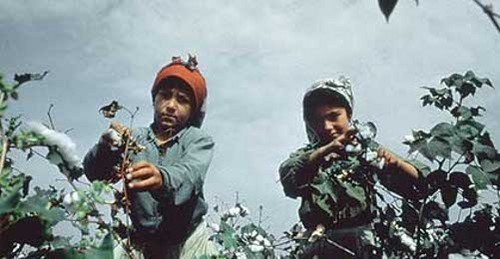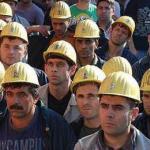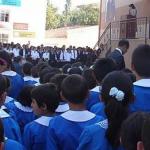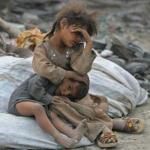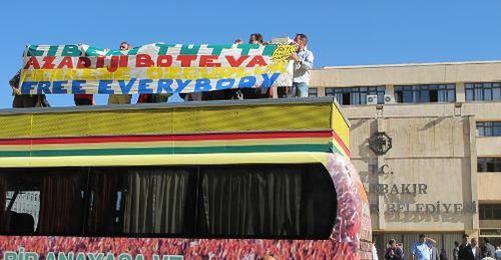The International Labour Organisation (ILO) has presented a new ILO report that despite recent progress in eliminating child labour which affects 218 million children globally, girls make up an estimated 100 million and more than half of them are under the age of 12. The report cites evidence that as a result of the economic crisis, more girls are kept out of school than boys with the result that they may enter the workforce at an early age.
The report was produced for the World Day Against Child Labour on June 12.
The ILO report, entitled Give Girls a Chance: Tackling child labour, a key to the future, notes that while recent global estimates indicate the number of children involved in child labour has been falling, the financial crisis threatens to erode this progress.
"We have seen some real progress in reducing child labour. The policies chosen in the present crisis will be a test of national and global commitment to take this fight forward." said ILO Director-General Juan Somavia.
Crisis increases child labour, especially among girls
The report says the danger of girls being forced into child labour is linked to evidence that in many countries families give preference to boys when making decisions on education of children. It states that because of the increase in poverty as result of the crisis poor families with a number of children may have to make choices as to which children stay in school. In cultures in which a higher value is placed on education of male children, girls risk being taken out of school, and are then likely to enter the workforce at an early age.
Other factors which could push up the numbers in child labour include cuts in national education budgets, and a decline in remittances of migrant workers, as these remittances often help to keep children in school.
This year's World Day against Child Labour also coincides with the tenth anniversary of ILO Convention No. 182 on the elimination of the worst forms of child labour.
"With 169 ratifications we are now just 14 short of universal ratification by our member States" said Mr. Somavia. "It is a remarkable expression of commitment. This Convention calls for special attention to the situation of girls and we want to highlight the particular risks that girls face during this crisis. Protecting girls - and all children - from child labour calls for integrated responses that include jobs for parents, and social protection measures that help them to keep both girls and boys in school. Access to basic education and training for girls and boys must also be part of the solutions for the future."
Gender inequality
The ILO report says the most recent global estimate indicated that more than 100 million girls are involved in child labour, and many are exposed to some of its worst forms. Girls face a number of particular problems that justify special attention, including:
1. Much work undertaken by girls is hidden from public view, which creates particular dangers. Girls make up the overwhelming number of children in domestic work in third party households and there are regular reports of the abuse of child domestic workers;
2. In their own homes, girls take on household chores to a much greater extent than boys. Combined with economic activity outside the household, this imposes a "double burden" that increases the risk of girls dropping out of school; and,
3. In many societies girls are in an inferior and vulnerable position and are more likely to lack basic education. This seriously restricts their future opportunities.
The report highlights the importance of investing in the education of girls as an effective way of tackling poverty. Educated girls are more likely to earn more as adults, marry later in life, have fewer and healthier children and have decision-making power within the household. Educated mothers are also more likely to ensure that their own children are educated, thereby helping to avoid future child labour.
Turkey one of the worst offenders
According to the report, Turkey is the third among the sixteen countries studied in terms of the hours that child labourers work. Only following Mali and Senegal, girls in Turkey aged 5-14 work around 30 hours a week, while boys work over 25 hours.
The average for the sixteen countries is 20.2 hours for girls and 19.2 hours for boys.
According to 2006 data, around one million children in Turkey are working.
Still many children not in school
A report published in Turkey on 11 June, produced by the Educatino Reform Initiative (ERG), there are 220,000 children aged 6 to 13 who are not registered for education in Turkey. Of these, 130,000 are girls, and 90,000 boys. Around 100,000 of the children not being educated are from central Anatolia and the southeast of the country. In addition, there are children who are not even registered as born, and have thus not been counted.
If a household is attached to a social security institution through work, this increases the probability of a child attending middle school (years 6-8) by 15 percent. However, around 54 percent of urban families have no steady income. This rate is at 84 percent in Gaziantep and 91 percent in Diyarbakır, in the southeast of the country.
At higher levels of schooling, the number of girls drop. While there are 96 girls to every 100 boys in primary 1, there are only 91 girls in 8th grade.
According to the child labour report of the Turkey Statistical Institute (TÜİK), six percent of Turkey's 6-17-year-old population is working. 66 percent of these are boys, and 34 percent girls. 41 percent work in agriculture, 28 in industyr, 23 in trade and 9 percent in the service industry.
The TÜİK report also warns that forcing children to work obstructs their education and calls for an integration of all children into the education system. (TK/AG)





